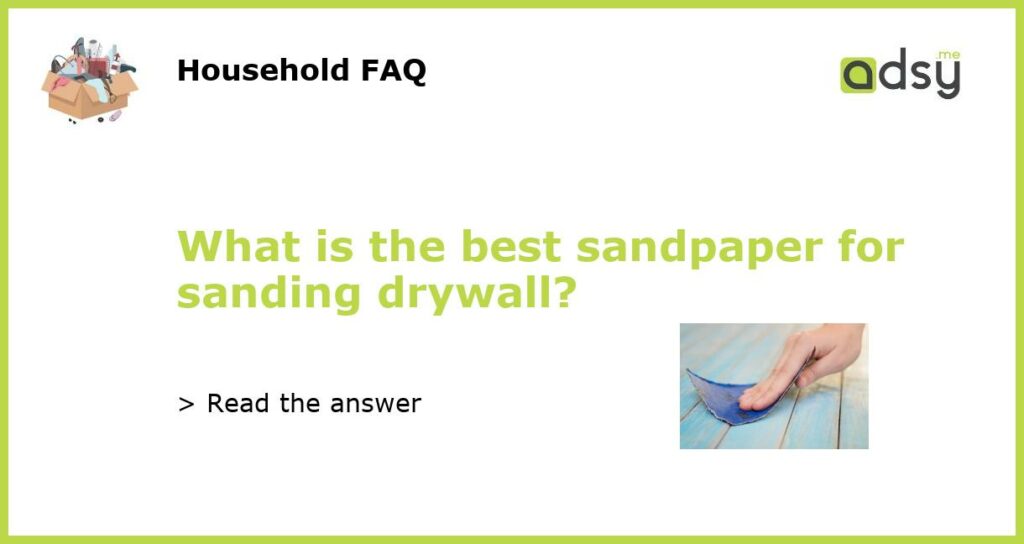The Importance of Choosing the Right Sandpaper for Sanding Drywall
When it comes to sanding drywall, choosing the right sandpaper is essential for achieving a smooth and professional finish. The type and grit of sandpaper you use can greatly impact the results of your project. In this article, we will discuss the best sandpaper for sanding drywall and provide tips on how to choose the right one for your needs.
Grit Matters: Understanding the Different Types of Sandpaper Grit
When it comes to sandpaper, the grit refers to the coarseness of the abrasive particles on the paper. The grit size determines how rough or smooth the sandpaper is. For sanding drywall, there are three common types of sandpaper grits that are typically used:
1. 80-120 grit: This coarse grit range is ideal for removing excess joint compound, repairing imperfections, and leveling surfaces. It is the starting point for sanding drywall and is effective at quickly removing material.
2. 150-180 grit: This medium grit range is used for smoothing out the surface of the drywall after the initial rough sanding. It helps to blend the joints and create a smooth finish. This grit range is often used for the final sanding before painting.
3. 220-320 grit: This fine grit range is used for final sanding to achieve a smooth and polished surface. It is typically used for finishing touches and eliminating any remaining imperfections. This grit range is commonly used for drywall repairs and touch-ups.
The Best Sandpaper for Sanding Drywall: Recommendations
While the specific sandpaper you choose will depend on the condition of your drywall and the level of finish you desire, there are a few recommended options that are popular among professionals:
1. Aluminum Oxide Sandpaper: This type of sandpaper is known for its durability and long-lasting performance. It is particularly effective at removing joint compound and leveling the surface of drywall. Aluminum oxide sandpaper is available in various grits, making it suitable for different stages of the sanding process.
2. Silicon Carbide Sandpaper: Silicon carbide sandpaper is another popular choice for sanding drywall. It is known for its superior cutting ability and smooth finish. Silicon carbide sandpaper is often used for fine sanding and polishing applications.
3. Garnet Sandpaper: Garnet sandpaper is a natural abrasive material that is commonly used for sanding wood. However, it can also be used for sanding drywall, particularly for light sanding and finishing touches. Garnet sandpaper is less aggressive than aluminum oxide or silicon carbide, making it a good option for delicate surfaces.
Tips for Choosing the Right Sandpaper
When choosing sandpaper for sanding drywall, consider the following factors:
1. Project requirements: Determine the level of finish you desire and choose sandpaper with the appropriate grit size. Coarse grits are ideal for initial sanding, while finer grits are used for smoothing and polishing.
2. Durability: Look for sandpaper that is long-lasting and resistant to wear and tear. It should be able to withstand the rigors of sanding and maintain its abrasive properties.
3. Compatibility: Ensure that the sandpaper is compatible with your sanding tools, such as sanding blocks or orbital sanders. Check the specifications of the sandpaper and choose the right size and type for your needs.
4. Brand reputation: Consider choosing sandpaper from reputable brands that are known for producing high-quality products. Look for reviews and recommendations from professionals or experienced DIYers.
Choosing the best sandpaper for sanding drywall is crucial for achieving a smooth and professional finish. Consider the grit size, the type of sandpaper, and the specific requirements of your project when making your selection. Remember to choose sandpaper that is compatible with your sanding tools and offers durability and long-lasting performance. By choosing the right sandpaper, you can ensure that your drywall surfaces are properly prepared for painting or finishing.






